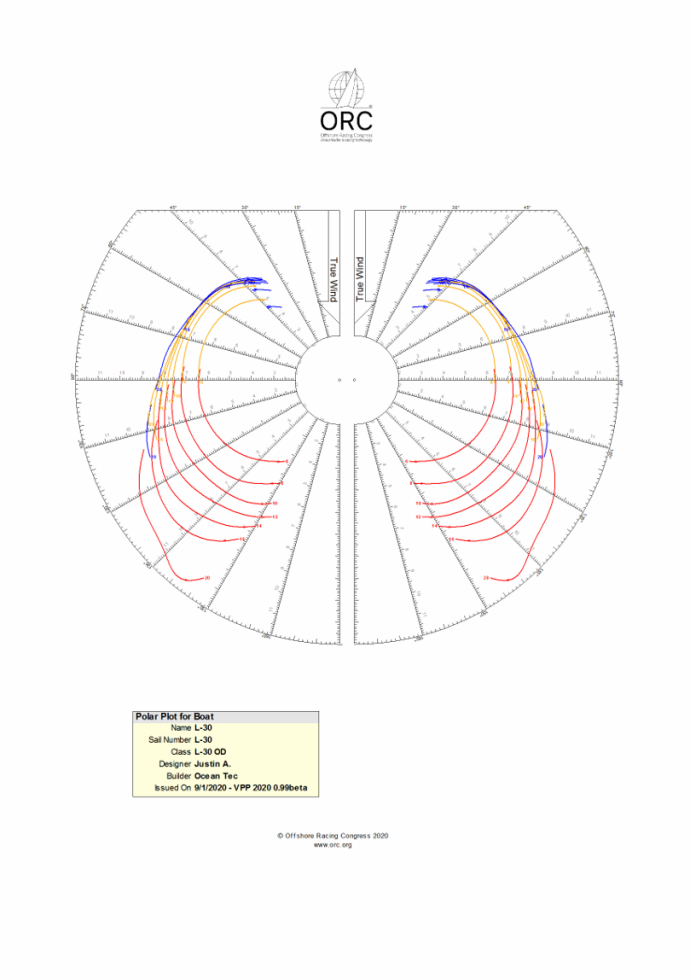|
An ORC Double Handed certificate is comprised of
two pages, and can be translated into any language. These are issued
by rating offices for boats with existing ORC Club or ORC
International certificates that want to race in a Double Handed
format, so the default crew weight is fixed at 170 kg. Sails on an
ORC DH certificate may be any combination of what is in the Sails
Inventory of the full-crewed certificate. |

|
 |
|
| Page 1 | Page 2 | ||
|
ORC DH certificates will be branded as Club or International,
depending on the quality of the measurement inputs in the original
full-crew certificate. A key difference from the Club
certificate is the Scoring Options box, which contains Time on Time
and Time on Distance ratings for four course model types that are
common for distance races: Coastal/Long distance, Circular Random,
Predominantly Upwind and Predominantly Downwind courses. The second page is a polar diagram showing the performance of the boat through a range of conditions…these are also available in an ORC Speed Guide that may be generated for the boat in Double Handed trim. Place the cursor over different parts of the certificate page for brief explanation. More details are given in measurement and scoring sections, while complete definitions can be found in appropriate rules documents. |
|||